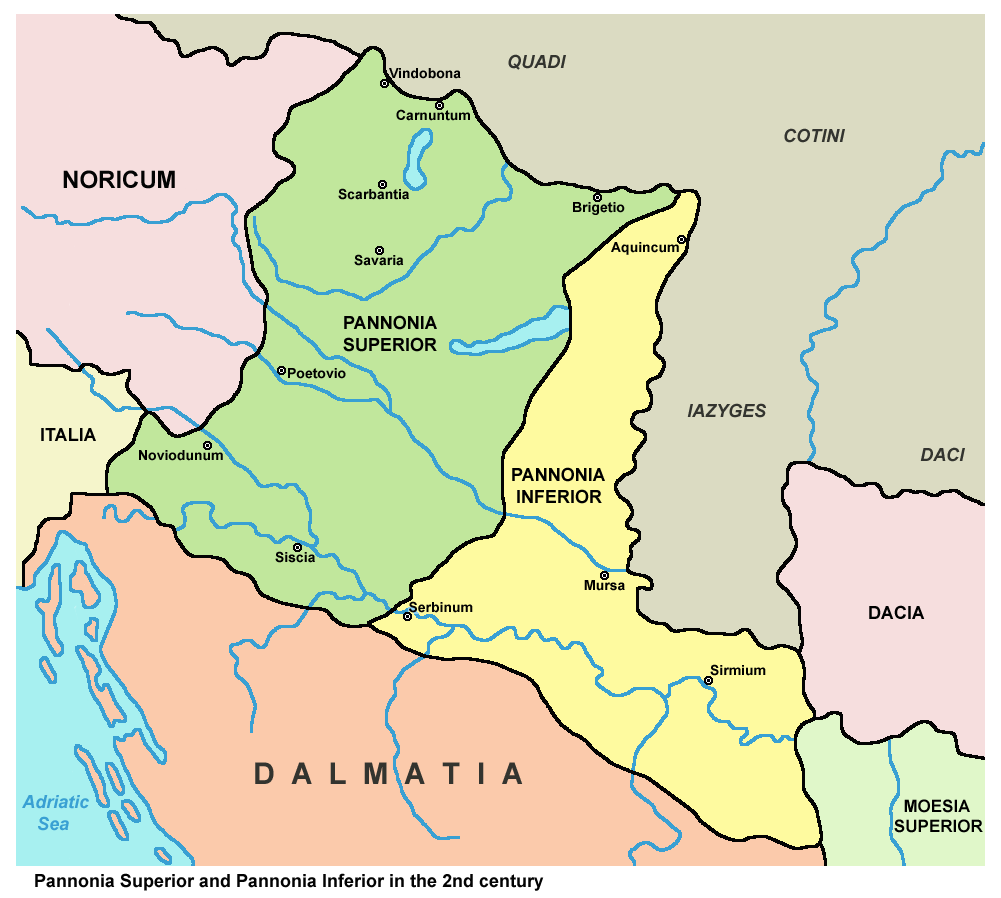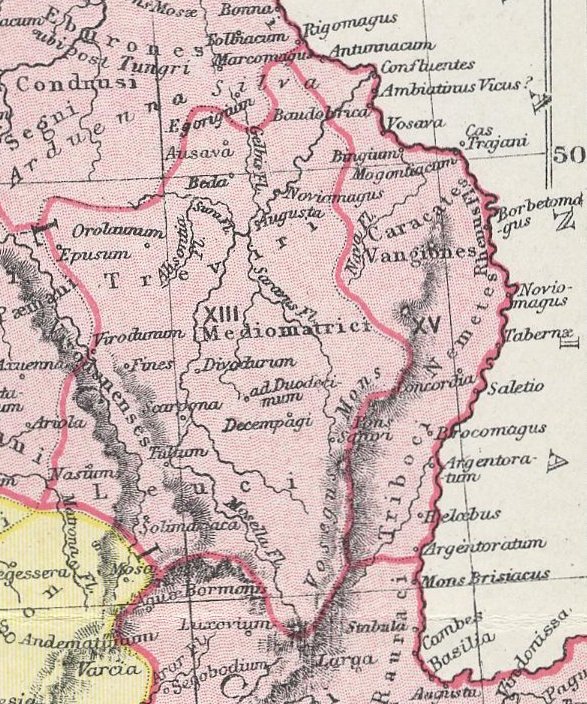|
Anarti
The Anartes (or Anarti, Anartii or Anartoi)Jan Czarnecki (1975) 120 were Celtic tribes, or, in the case of those sub-groups of Anartes which penetrated the ancient region of Dacia (roughly modern Romania), Celts culturally assimilated by the Dacians.Oltean Ioana A (2007) 47 Ptolemy's ''Geographia'' locates the ''Anartoi'' in the north of Dacia.Jan Czarnecki (1975) 119 Some groups of Anartes occupied parts of modern Slovakia and southeastern Poland. The Dacian town of ''Docidava'' was situated in the territory of the Anartes, according to Pârvan. The ''Anartophracti'' (or ''Anartofraktoi'') are mentioned by Ptolemy. This tribe's name appears to be compound Latin-Greek name and may be related to the ''Anartoi'' resident in Dacia, Czarnecki argues.Jan Czarnecki (1975) 119 The ''Anartofraktoi'' were a northern Dacian tribe, according to Braune or mixed Dacian-Celtic, according to Pârvan. In ancient sources, the earliest mention of the Anartes is in the Elogium of Tusculum (10 BC). ... [...More Info...] [...Related Items...] OR: [Wikipedia] [Google] [Baidu] |
Dacians
The Dacians (; la, Daci ; grc-gre, Δάκοι, Δάοι, Δάκαι) were the ancient Indo-European inhabitants of the cultural region of Dacia, located in the area near the Carpathian Mountains and west of the Black Sea. They are often considered a subgroup of the Thracians. This area includes mainly the present-day countries of Romania and Moldova, as well as parts of Ukraine, Moravian Banovina, Eastern Serbia, Northern Bulgaria, Slovakia, Hungary and Southern Poland. The Dacians and the related Getae spoke the Dacian language, which has a debated relationship with the neighbouring Thracian language and may be a subgroup of it. Dacians were somewhat culturally influenced by the neighbouring Scythians and by the Celtic invasion of the Balkans, Celtic invaders of the 4th century BC. Name and etymology Name The Dacians were known as ''Geta'' (plural ''Getae'') in Ancient Greek writings, and as ''Dacus'' (plural ''Daci'') or ''Getae'' in Roman Empire, Roman documents, b ... [...More Info...] [...Related Items...] OR: [Wikipedia] [Google] [Baidu] |
Pannonia Popolazioni Png
Pannonia (, ) was a Roman province, province of the Roman Empire bounded on the north and east by the Danube, coterminous westward with Noricum and upper Roman Italy, Italy, and southward with Dalmatia (Roman province), Dalmatia and upper Moesia. Pannonia was located in the territory that is now western Hungary, western Slovakia, eastern Austria, northern Croatia, north-western Serbia, northern Slovenia, and northern Bosnia and Herzegovina. Name Julius Pokorny believed the name ''Pannonia'' is derived from Illyrian languages, Illyrian, from the Proto-Indo-European language, Proto-Indo-European root ''*pen-'', "swamp, water, wet" (cf. English ''fen'', "marsh"; Hindi ''pani'', "water"). Pliny the Elder, in ''Natural History (Pliny), Natural History'', places the eastern regions of the Hercynian Forest, Hercynium jugum, the "Hercynian mountain chain", in Pannonia and Dacia (now Romania). He also gives us some dramaticised description of its composition, in which the proximity of t ... [...More Info...] [...Related Items...] OR: [Wikipedia] [Google] [Baidu] |
De Bello Gallico
''Commentarii de Bello Gallico'' (; en, Commentaries on the Gallic War, italic=yes), also ''Bellum Gallicum'' ( en, Gallic War, italic=yes), is Julius Caesar's firsthand account of the Gallic Wars, written as a third-person narrative. In it Caesar describes the battles and intrigues that took place in the nine years he spent fighting the Celtic and Germanic peoples in Gaul that opposed Roman conquest. The "Gaul" that Caesar refers to is ambiguous, as the term had various connotations in Roman writing and discourse during Caesar's time. Generally, Gaul included all of the regions primarily inhabited by Celts, aside from the province of Gallia Narbonensis (modern-day Provence and Languedoc-Roussillon), which had already been conquered in Caesar's time, therefore encompassing the rest of modern France, Belgium, Western Germany, and parts of Switzerland. As the Roman Republic made inroads deeper into Celtic territory and conquered more land, the definition of "Gaul" shifted. Concur ... [...More Info...] [...Related Items...] OR: [Wikipedia] [Google] [Baidu] |
Púchov Culture
The Púchov culture was an archaeological culture named after site of Púchov-Skalka in Slovakia. Its probable bearer was the Celtic Cotini and/or Anartes tribes. It existed in northern and central Slovakia (although it also plausibly spread to the surrounding regions) between the 2nd century BCE and the 1st century CE. The Púchov culture developed from the Lusatian culture and it was influenced later by the Illyrian culture, the Celts, and by the beginning of the Christian era, the Dacians. Settlements were situated on moderate hill sides and near streams. The largest known religious, economic, and political center of the Púchov culture was the hill-fort of Havránok, famous for its traces of human sacrifice. As a result of the Dacian and Germanic tribal expansions at the beginning of the Common Era, the Púchov culture and its settlements began to decline, and its bearers were eventually assimilated into Dacian and other migrating tribes.Bolchazy, Caplovic (2006) 308 See al ... [...More Info...] [...Related Items...] OR: [Wikipedia] [Google] [Baidu] |
Pannonia Inferior
Pannonia Inferior, lit. Lower Pannonia, was a province of the Roman Empire. Its capital was Sirmium. It was one of the border provinces on the Danube. It was formed in the year 103 AD by Emperor Trajan who divided the former province of Pannonia into two parts: Pannonia Superior and Pannonia Inferior. The province included parts of present-day states of Hungary, Serbia, Croatia, and Bosnia and Herzegovina. The province was bordered to the east (across the Danube) by a Sarmatian tribe—the Iazyges. Later, the Vandals appeared to the north-east. Settlements Major settlements in Pannonia Inferior included: * ''Sirmium'' (Sremska Mitrovica) which several times served as an imperial residence for several emperors. * ''Aquincum'' ( Buda), the provincial capital. * ''Cuccium'' (Ilok) * ''Cibalae'' (Vinkovci) * ''Mursa'' ( Osijek) * ''Certissa'' (Đakovo) * ''Marsonia'' (Slavonski Brod) * ''Sopianae'' (Pécs) Aftermath and legacy The province was yet again split during the reign of th ... [...More Info...] [...Related Items...] OR: [Wikipedia] [Google] [Baidu] |
Roman Province
The Roman provinces (Latin: ''provincia'', pl. ''provinciae'') were the administrative regions of Ancient Rome outside Roman Italy that were controlled by the Romans under the Roman Republic and later the Roman Empire. Each province was ruled by a Roman appointed as governor. For centuries it was the largest administrative unit of the foreign possessions of ancient Rome. With the administrative reform initiated by Diocletian, it became a third level administrative subdivision of the Roman Empire, or rather a subdivision of the imperial dioceses (in turn subdivisions of the imperial prefectures). Terminology The English word ''province'' comes from the Latin word ''provincia''. In early Republican times, the term was used as a common designation for any task or set of responsibilities assigned by the Roman Senate to an individual who held ''imperium'' (right of command), which was often a military command within a specified theatre of operations. In time, the term became t ... [...More Info...] [...Related Items...] OR: [Wikipedia] [Google] [Baidu] |
Marcus Aurelius
Marcus Aurelius Antoninus (Latin: áːɾkus̠ auɾέːli.us̠ antɔ́ːni.us̠ English: ; 26 April 121 – 17 March 180) was Roman emperor from 161 to 180 AD and a Stoic philosopher. He was the last of the rulers known as the Five Good Emperors (a term coined some 13 centuries later by Niccolò Machiavelli), and the last emperor of the Pax Romana, an age of relative peace and stability for the Roman Empire lasting from 27 BC to 180 AD. He served as Roman consul in 140, 145, and 161. Marcus Aurelius was born during the reign of Hadrian to the emperor's nephew, the praetor Marcus Annius Verus, and the heiress Domitia Calvilla. His father died when he was three, and his mother and grandfather raised him. After Hadrian's adoptive son, Aelius Caesar, died in 138, the emperor adopted Marcus's uncle Antoninus Pius as his new heir. In turn, Antoninus adopted Marcus and Lucius, the son of Aelius. Hadrian died that year, and Antoninus became emperor. Now heir to the throne, ... [...More Info...] [...Related Items...] OR: [Wikipedia] [Google] [Baidu] |
Marcomanni
The Marcomanni were a Germanic people * * * that established a powerful kingdom north of the Danube, somewhere near modern Bohemia, during the peak of power of the nearby Roman Empire. According to Tacitus and Strabo, they were Suebian. Origin It is believed their name may derive from Proto-Germanic ''*markō'' "border, boundary" (hence the English ''march'' or ''mark'', meaning "frontier, border", as in the Welsh marches and the kingdom of Mercia) and ''*mann-'' (pl. ''*manniz'') "man", ''*Markōmanniz'', which would have been rendered in Latinised form as ''Marcomanni''. The Marcomanni first appear in historical records as confederates of the Suebi of Ariovistus fighting against Julius Caesar in Gaul (now France) after they had crossed the Rhine from what is now southern Germany. The exact position of their lands at the time is not known. The fact that their name existed before the Romans had territory near the Danube or Rhine raises the question of which border they lived ... [...More Info...] [...Related Items...] OR: [Wikipedia] [Google] [Baidu] |
Roman Empire
The Roman Empire ( la, Imperium Romanum ; grc-gre, Βασιλεία τῶν Ῥωμαίων, Basileía tôn Rhōmaíōn) was the post-Republican period of ancient Rome. As a polity, it included large territorial holdings around the Mediterranean Sea in Europe, North Africa, and Western Asia, and was ruled by emperors. From the accession of Caesar Augustus as the first Roman emperor to the military anarchy of the 3rd century, it was a Principate with Italia as the metropole of its provinces and the city of Rome as its sole capital. The Empire was later ruled by multiple emperors who shared control over the Western Roman Empire and the Eastern Roman Empire. The city of Rome remained the nominal capital of both parts until AD 476 when the imperial insignia were sent to Constantinople following the capture of the Western capital of Ravenna by the Germanic barbarians. The adoption of Christianity as the state church of the Roman Empire in AD 380 and the fall of the Western ... [...More Info...] [...Related Items...] OR: [Wikipedia] [Google] [Baidu] |
Rauraci
The Rauraci or Raurici were a small Gallic tribe dwelling in the Upper Rhine region, around the present-day city of Basel, during the Iron Age and the Roman period. Name They are mentioned as ''Rauracis'' and ''Rauracorum'' by Caesar (mid-1st c. BC), ''Raurici'' (var. -''aci'') by Pliny (1st c. AD), and as ''Rauracense'' in the ''Notitia Dignitatum'' (5th c. AD).''Notitia Dignitatum'', 9:9., s.v. ''Rauraci'' and ''Col. Augusta Raurica''. The ethnonym ''Rauraci'' derives from the ancient Celtic name of the river Ruhr, ''Raura''. The city of Augst, attested in the 2nd century AD as ''Augoústa Rhauríkōn'' (Αὐγούστα Ῥαυρίκων), is indirectly named after the tribe. Geography Territory Their name seems to indicate an original homeland near the river Ruhr, further north of their attested territory. After their failed migration towards southwestern Gaul was repelled by the Romans in 58 BC, the Rauraci settled in the Upper Rhine area, with a territory stretching f ... [...More Info...] [...Related Items...] OR: [Wikipedia] [Google] [Baidu] |
Nemetes
The Nemetes (occasionally ''Nemeti'') were a tribe settled along the Upper Rhine by Ariovistus in the 1st century BC. Their capital, ''Noviomagus Nemeton'' (or ''Civitas Nemetum''), was close to the site of medieval Speyer. Their area of settlement was the contact zone between Celtic (Gaulish) and Germanic peoples. According to Tacitus, the Nemetes were "unquestionably Germanic". The name of the tribe, however, is Celtic as the name of its main town ''Noviomagus'' meaning ''noviios'' 'new' and ''magos'' 'plain', 'market' (cf. Welsh ''maes'' 'field', Old Irish ''mag'' 'plain'), as are those of several gods worshipped in their territory, including Nemetona, who is thought to have been their eponymous deity.John T. Koch (2006). ''Celtic Culture: A Historical Encyclopedia.'' ABC-CLIO, p. 1351. Both of these names are taken to be derivations from the Celtic stem '' nemeto-'' "sacred grove".Xavier Delamarre (2003). ''Dictionnaire de la langue gauloise.'' Éditions Errance, p. 233. ... [...More Info...] [...Related Items...] OR: [Wikipedia] [Google] [Baidu] |







